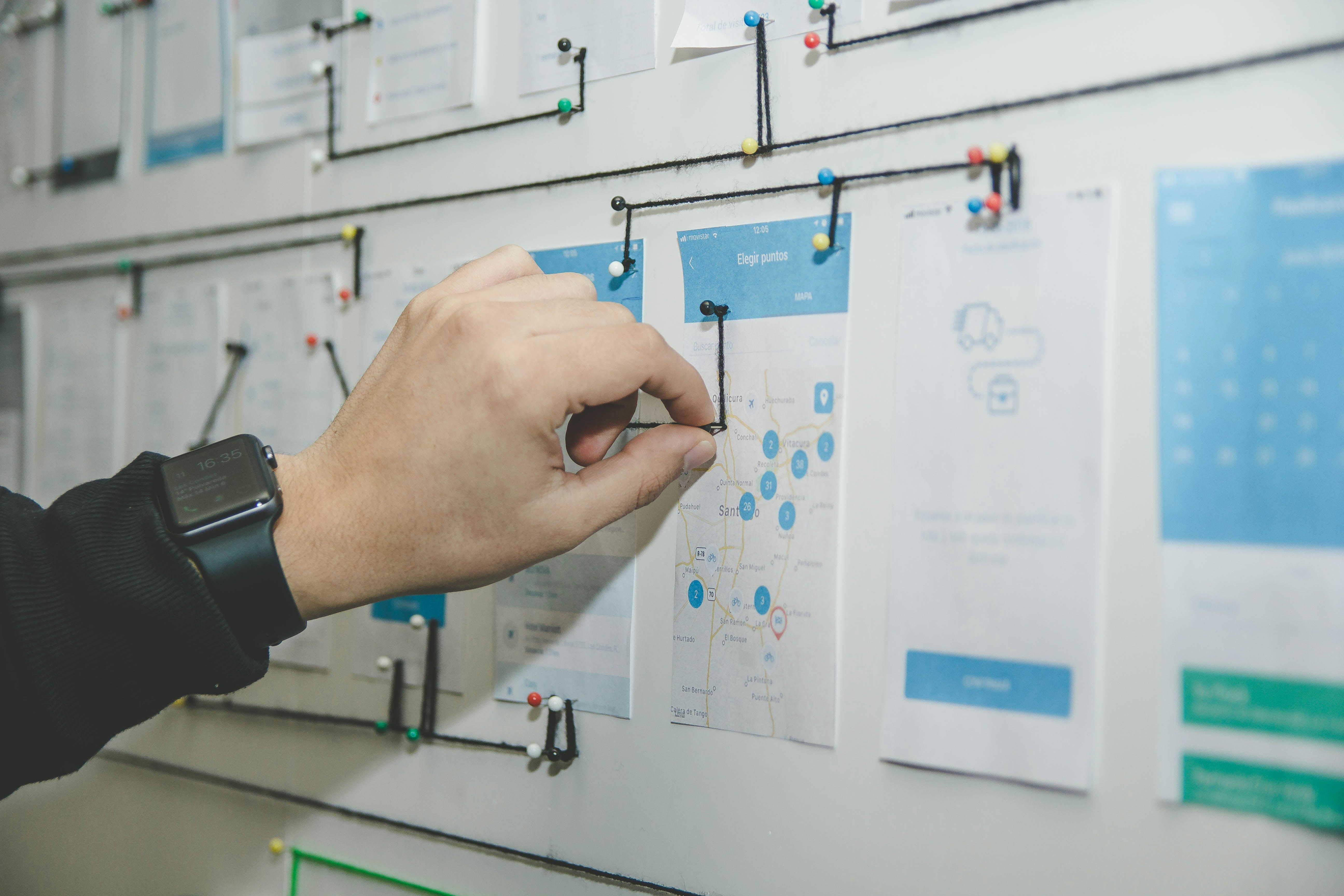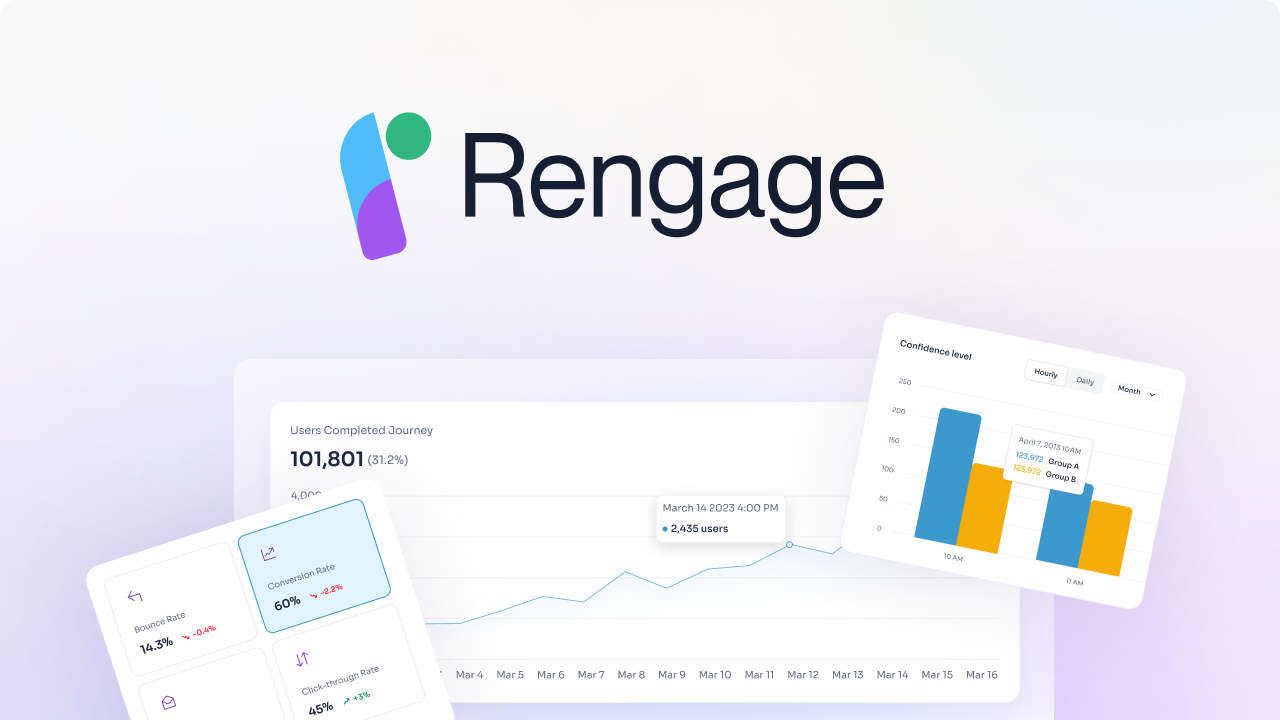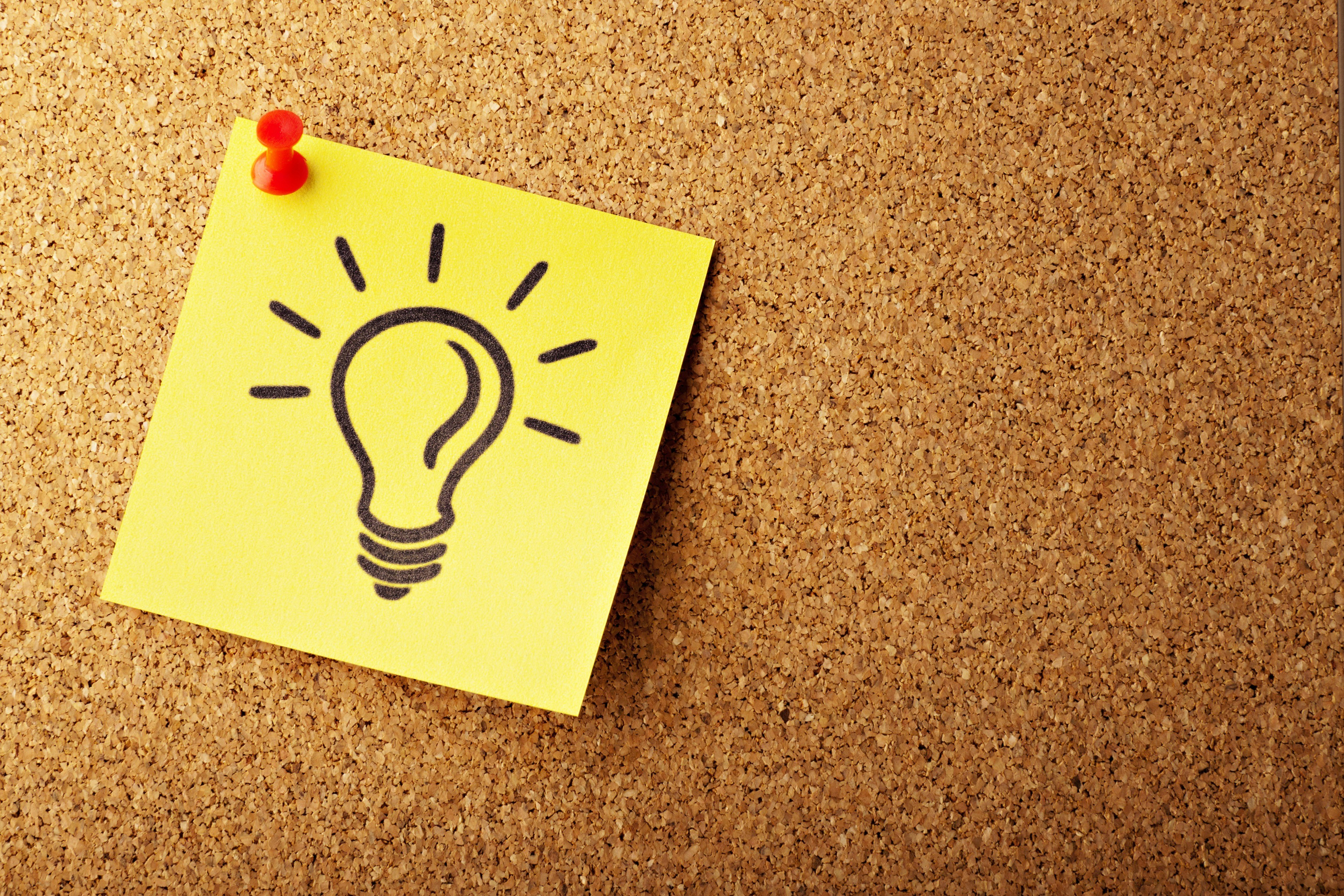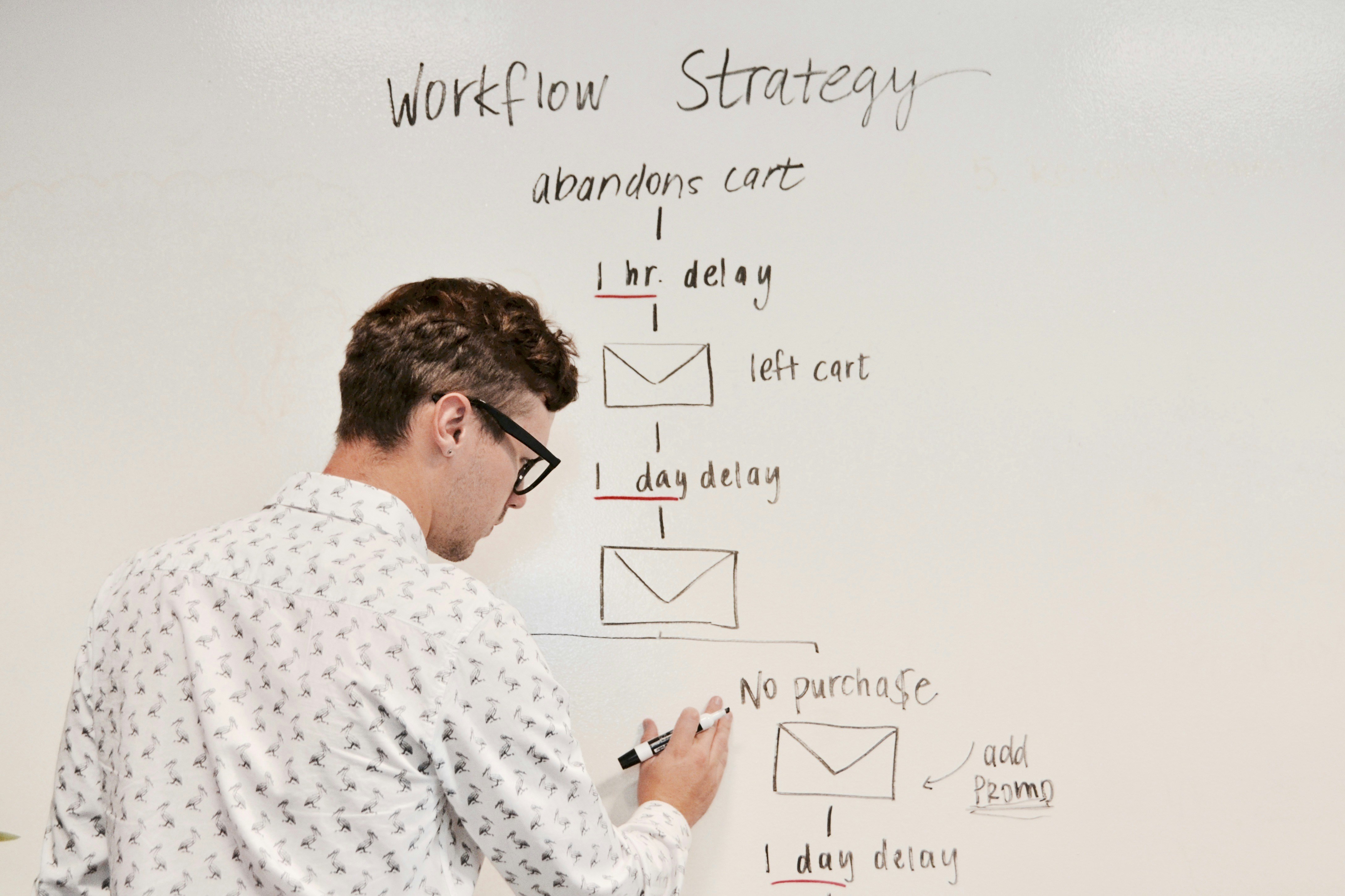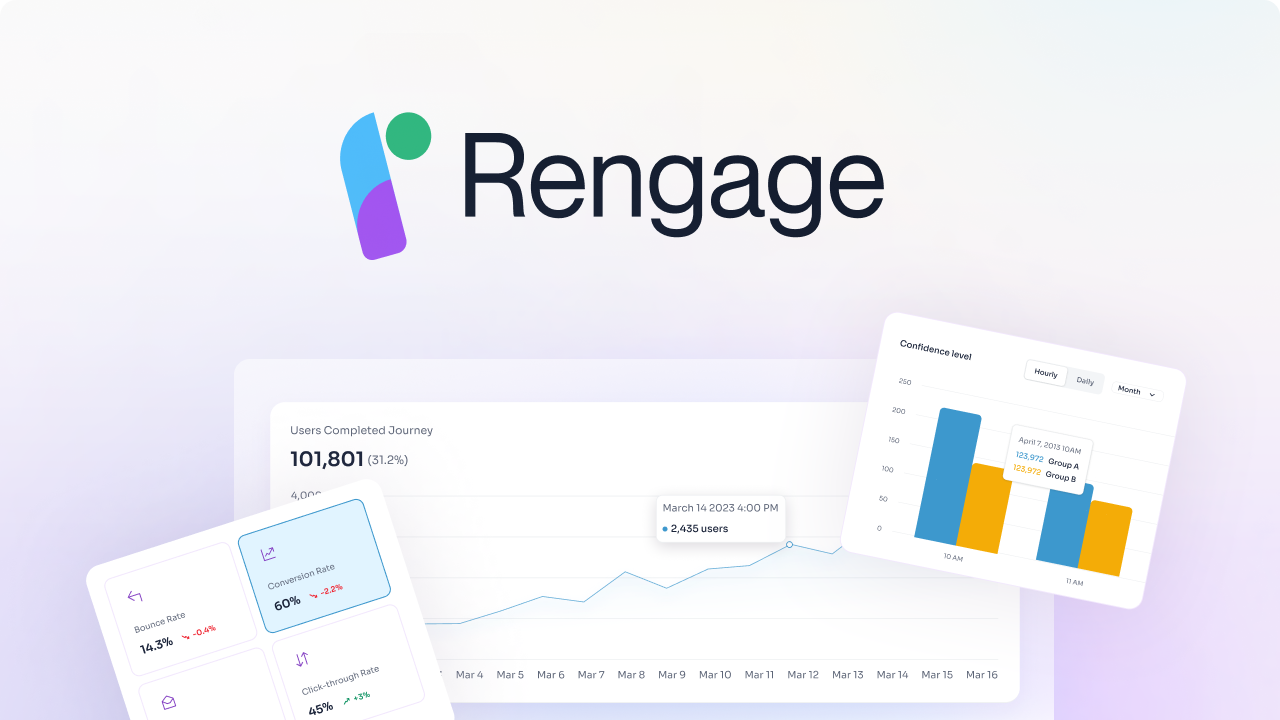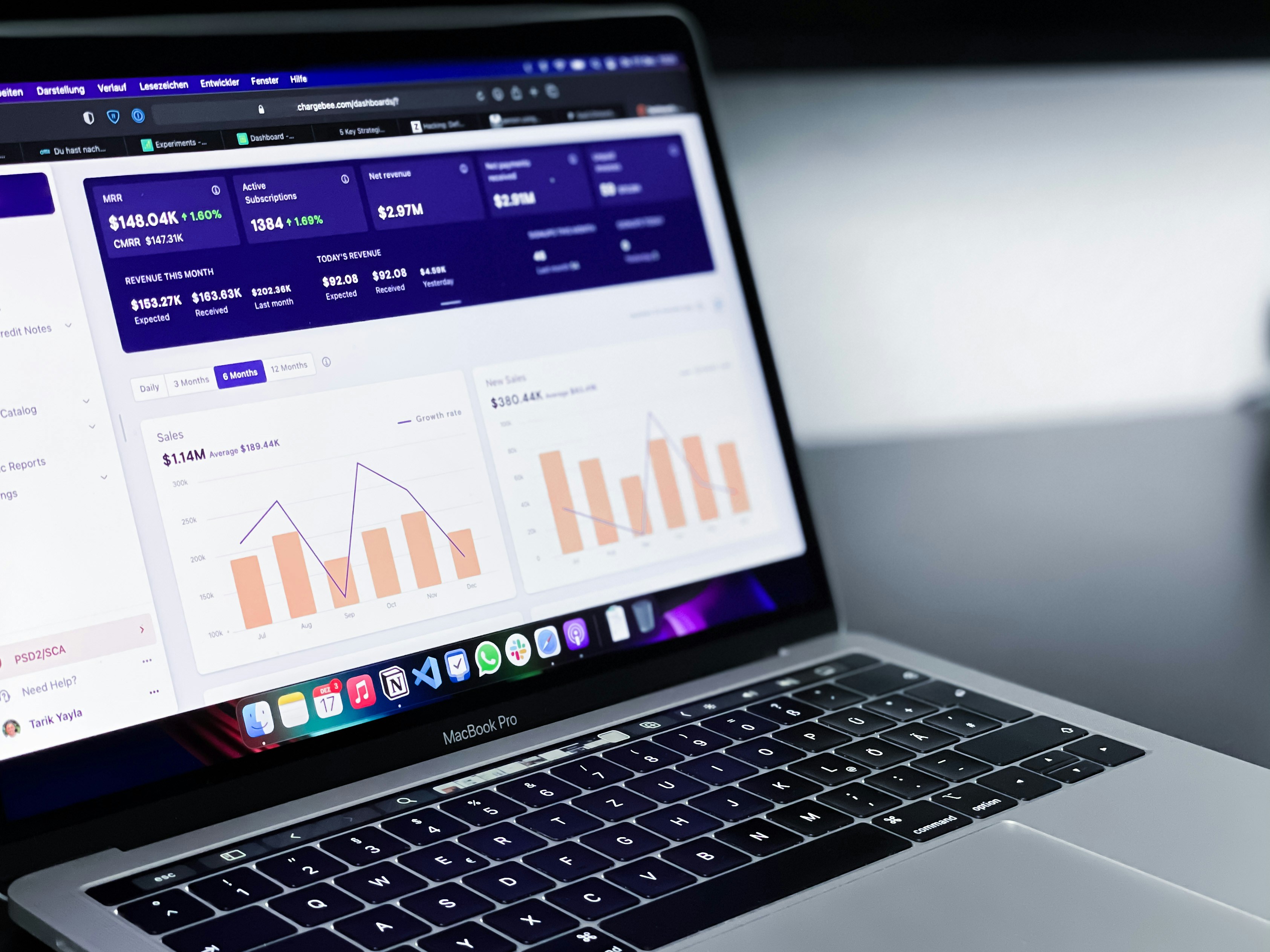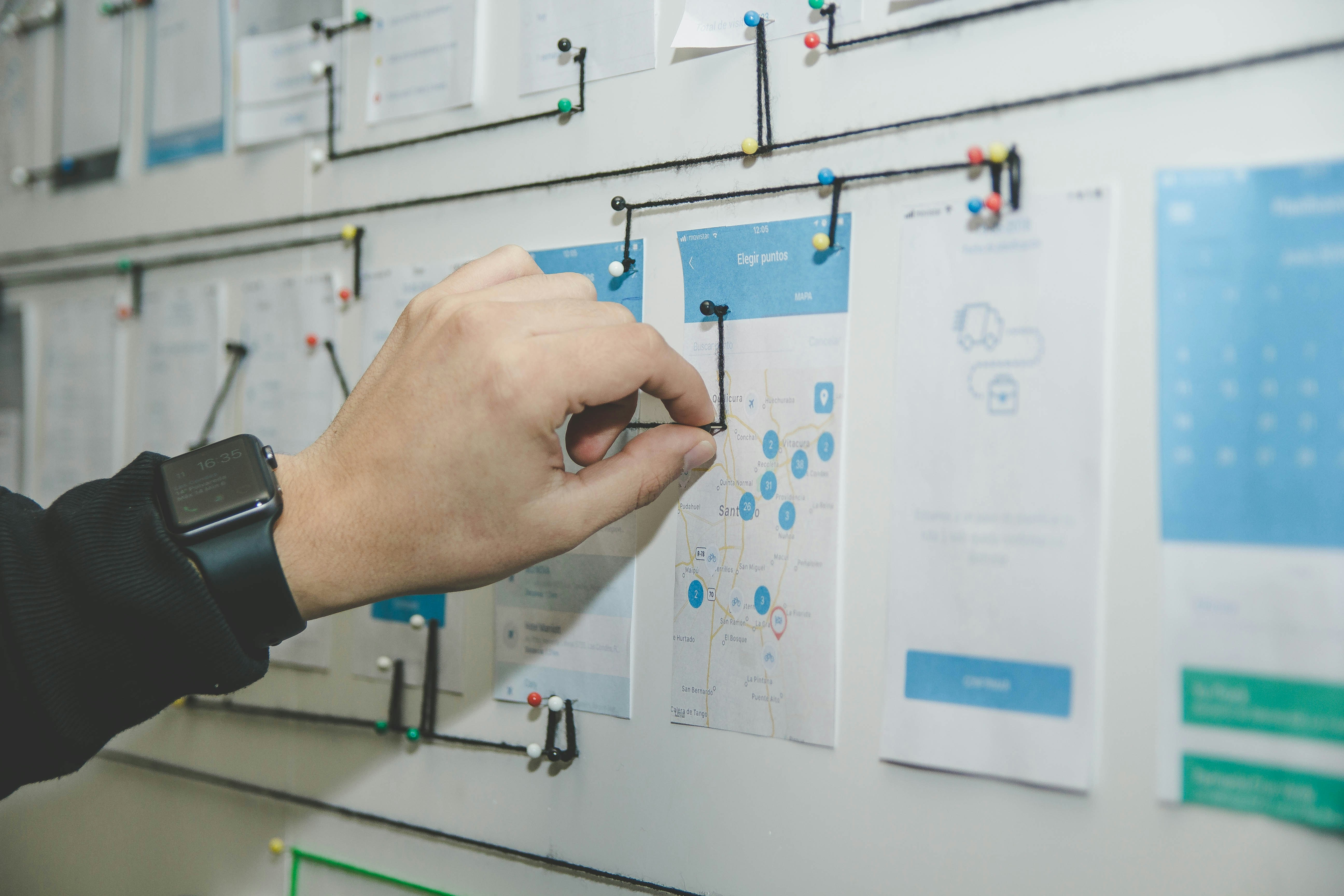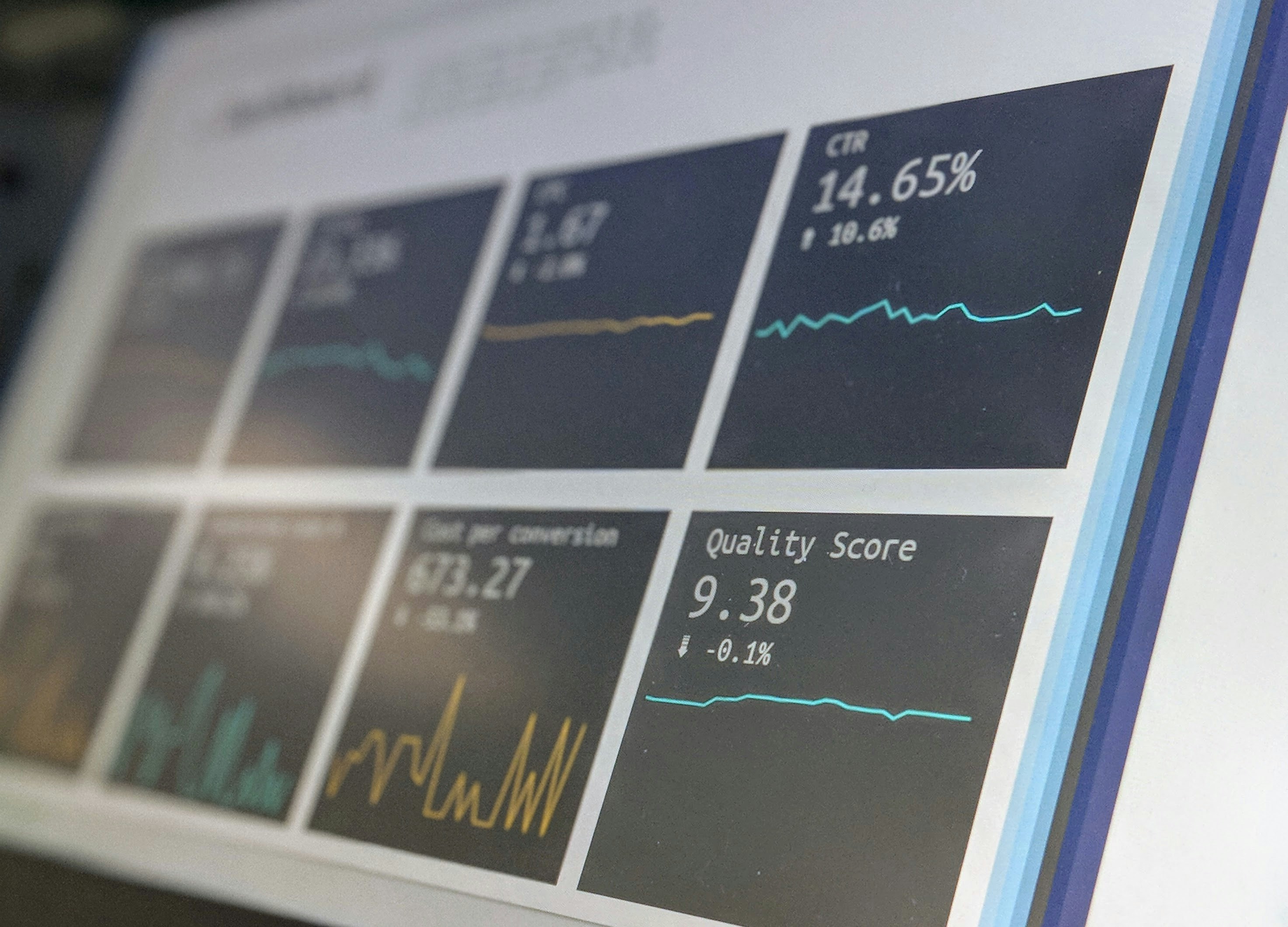A Step-By-Step Guide to Customer Journey Analysis & Top 12 Tools
Understanding customer journey Analysis and Customer Lifecycle Management is like having a treasure map for your business operations. This detailed guide shows every step your customers take when engaging with your brand. The insights can help you tailor products and services to meet your customer's needs at each step. With a bird's eye view of customer interactions, you can create personalized marketing strategies to boost sales and build lasting customer relationships. Dig into the blog to learn more about the importance of customer journey analysis, and explore how to leverage customer lifecycle management strategies effectively.
What Is Customer Journey Analysis?

Businesses conduct customer journey analysis to understand how customers interact with their organization across all present and future channels. This analysis allows businesses to track and analyze customer behavior, such as the way they interact with various touchpoints, in order to deliver the optimal customer experience. By having a deep understanding of customer journeys, businesses can optimize their marketing strategies, enhance customer experiences, and improve conversion rates.
Customer journey analysis provides insights into customer interactions, preferences, and behaviors, enabling businesses to make data-driven decisions that align with customer needs. This analysis is crucial in today's digital age, where customers have access to multiple channels and expect seamless experiences across touchpoints. By conducting customer journey analysis, businesses can identify pain points, opportunities for improvement, and strategies to enhance customer engagement and satisfaction.
Related Reading
7 Benefits of Customer Journey Analysis

1. Your Brand Becomes More Customer-Centric
Understanding the customer journey allows your company to be more customer-centric. It allows you to closely evaluate the activities, expectations, thoughts, and feelings of your customers. You learn what they like and dislike, how to move them through your buying cycle, and how to satisfy and retain them. When journey mapping is complemented with customer journey analytics, it helps you understand the priority for your customer experience initiatives.
2. Your Business Becomes More Unified
In addition, with the right focus, customer journey mapping and customer journey analytics break down internal silos. They empower you to streamline services across departments. Not only that, but they help to align everyone by providing a common understanding of the customer experience. Employees get greater visibility into what happens upstream and downstream of their interactions with customers, letting everybody provide a more consistent, high-quality experience.
3. You Can Find Track Issues as They Happen
With a sophisticated customer journey analytics platform, you can pinpoint issues in real-time. You can test new approaches and see their influence on your customer experience and bottom line with analytics that update as quickly as you need them.
4. You See Direct and Indirect Feedback in One Place
Explicit feedback – for example, the information you gather through surveys – is easier to pinpoint to specific interactions customers have with your brand. The customer has an experience and directly after, you request input.
Implicit feedback is more complex to understand. This type of data might include operational data such as sales numbers, or it might cover social mentions, what your customers say on the phone to your care center, third-party reviews, and more.
5. Removing Bias Through Hyper-Objectivity
Removal of bias leads to a more objective understanding of customer interactions. This is achieved through hyper-objectivity, which involves
Data-Driven Decisions
Instead of relying on assumptions or anecdotal experiences, customer journey analysis utilizes comprehensive data gathered across multiple touchpoints. This data includes both quantitative metrics and qualitative insights, ensuring decisions are grounded in reality rather than perception.
Comprehensive Viewpoints
Hyper-objectivity in customer journey analysis helps in observing the customer's interactions without the cloud of internal biases. It provides a holistic view of the customer experience, capturing details that may be overlooked due to departmental biases or limited viewpoints.
Consistent Measurement and Comparison
By standardizing how customer interactions are measured and analyzed, biases introduced by varying measurement techniques across different departments are minimized. This standardization allows for consistent comparison and more accurate tracking of the customer experience over time.
6. Maximize Customer Retention and Loyalty
There are several factors that contribute to customer retention and long-term loyalty. But one the most important is the first impression they have during the customer journey. If you get started out on the right foot, providing a smooth journey with no major hiccups or bottlenecks, they’re not only more likely to buy, but they’re also more likely to stick around longer and become loyal customers. This often means lower customer churn and a higher Net Promoter Score. Some may even become brand ambassadors.
7. Improve ROI
Are your investments in customer experience worth it? By using customer journey analytics, you’ll be able to measure ROI for customer experience initiatives. From there, you can streamline, remove, or cost cut initiatives that don’t benefit your bottom line, or double down on the aspects of the buyer’s journey that do.
For instance, if you run an incredibly expensive advertising campaign that doesn’t yield the same level of new customers or purchase page visits as unpaid or more in-house content, you can aim to save money on ads and focus on the more affordable strategies that actually earn you money.
Step-by-Step Guide for Effective Customer Journey Analysis

Identify touchpoints and define interactions
When analyzing customer journeys, it's vital to categorize touchpoints and define interactions that customers have with your product or service. These interactions are typically divided into stages like awareness, consideration, conversion, service, and advocacy.
For instance, a customer clicking on a link from another website is an awareness touchpoint, while setting up a paid account is a conversion interaction. It's crucial to organize these touchpoints to gain insights into how customers engage with your brand from the initial awareness stage to becoming advocates.
Measure how customers interact on each channel
After identifying touchpoints, the next step is to track how customers interact on each channel. This involves connecting all the channels where customers engage with your brand, such as social media, email, website, or app, to a tool like a customer data platform (CDP).
By doing so, you can compare engagement rates across channels and determine the most critical metrics to track based on your business goals. For instance, you can analyze which channel contributes most to conversions, enabling you to optimize your marketing strategy accordingly.
Set up an attribution program
Attribution is crucial for understanding the impact of different touchpoints on customer conversions. By setting up an attribution program, you can determine which interactions are most effective in leading customers to convert.
Multi-touch attribution is recommended as it considers the entire customer journey, providing a more comprehensive view of customer behavior. For instance, you can identify significant user traits and events that contribute to conversions and track them across various channels, such as blog posts and LinkedIn ads.
Identify where and why customers churn
Customer churn is an essential aspect of customer journey analysis that helps businesses understand why customers stop using their products or services. Sometimes, customers provide feedback explaining their decision to churn, while other times they disengage without any explanation.
By digging into customer support interactions or session analytics, you can identify the reasons for their dissatisfaction. Customer journey analytics can help predict churn by recognizing patterns like unsubscribing from email lists before disengaging, allowing you to re-engage customers at risk of churn.
Use your data to create a customer journey map
Customer journey maps visually illustrate customers' processes, needs, and perceptions throughout their relationship with a company. By using data from customer journey analytics, you can create detailed customer journey maps that capture the entire customer experience. These maps help businesses better understand their customers' behavior and enable them to improve the overall customer journey.
Unlocking Personalized Customer Experiences through Demos
Book a free demo to learn about how you can transform customer interactions into personalized experiences that drive loyalty and growth.
7 Metrics for Analyzing the Customer Journey

Metrics play a critical role in analyzing the customer journey as they provide businesses with valuable insights into their performance, help understand customer behavior, and enhance customer interactions. By measuring various metrics, businesses can evaluate the success of their strategies and identify areas for improvement. Here are some key metrics that are relevant and valuable for customer journey analysis.
1. Customer Satisfaction Score (CSAT)
A customer satisfaction score (CSAT) measures users’ satisfaction with a product or service, typically on a scale from 1-10. Calculated as the average CSAT, which is the sum of satisfaction ratings divided by the total number of responses.
2. Customer Lifetime Value (CLV)
CLV reflects the total revenue expected from a customer throughout their relationship with a business. Calculated as annual revenue per customer multiplied by customer lifespan in years, minus customer acquisition cost.
3. Customer Effort Score (CES)
CES measures how easy or difficult it is to do business with a company through surveys in which customers rate ease of use on a numerical scale. Calculated as the sum of effort ratings divided by the total number of responses.
4. Session/activity time
Tracking the average session time helps identify trends or outliers in app usage. Calculated by the length of session time (time when the user leaves the app minus time when the user enters the app) divided by the total number of sessions.
5. Bounce rate
Bounce rate refers to the percentage of single-page sessions out of the total number of sessions. Calculated as the percentage of single-page sessions divided by all sessions, multiplied by 100.
6. Open rate
Open rate measures the percentage of emails that were opened among all emails sent in a campaign. Calculated as the number of opened emails divided by the number of emails sent, multiplied by 100.
7. Conversion rate
Conversion measures the percentage of people who perform an action asked of them. Calculated as the number of users who completed a specific action divided by the number of users exposed to that option, multiplied by 100.
Related Reading
- Digital Customer Journey Mapping
- Customer Journey Analysis
- Ecommerce Customer Journey
- B2B Customer Journey
- Customer Journey Orchestration
- Omnichannel Customer Journey
- Saas Customer Journey
- Marketing Automation Customer Journey
- Customer Journey Optimization
- Micro Moments Customer Journey
- Customer Journey Research
- Customer Journey Automation
- Customer Journey Insights
- Customer Journey Dashboard
- Customer Journey Personalization
- Customer Journey Metrics
12 Best Customer Journey Analytics Tools
1. Rengage
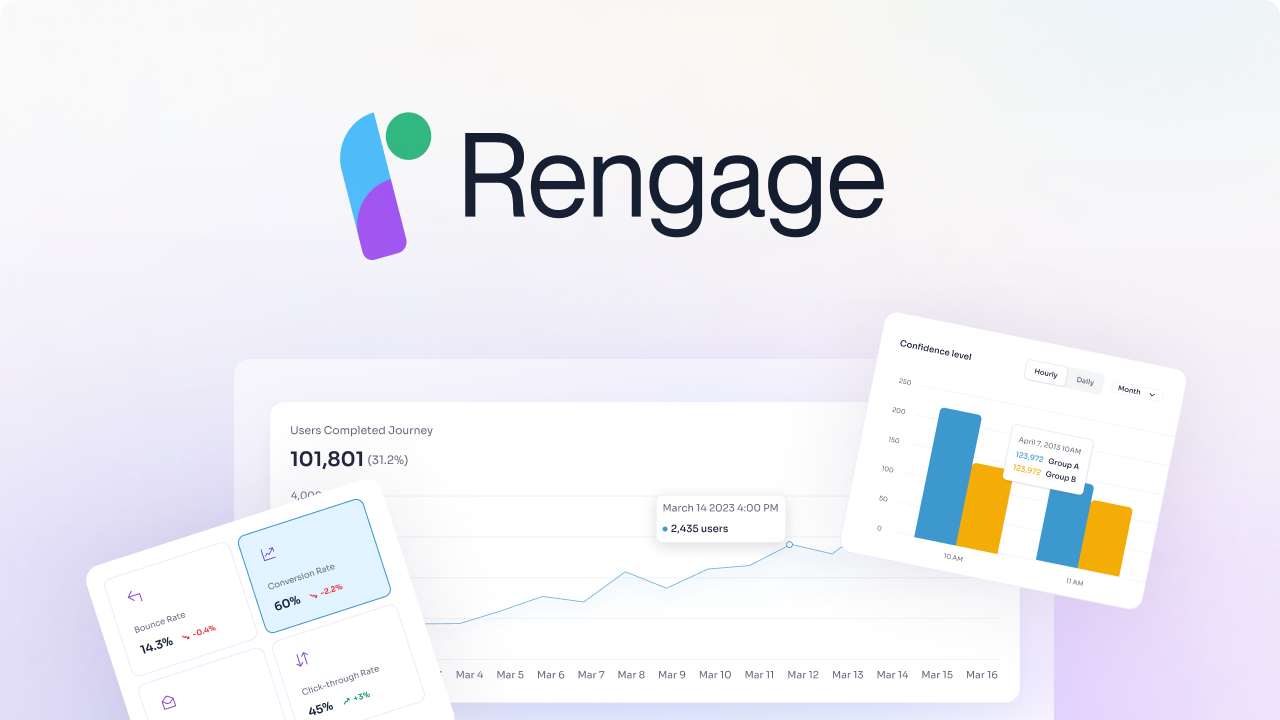
We provide a comprehensive solution for managing and enhancing customer journeys, delivering insights and measurable outcomes with no code. We accelerate your customer journey from onboarding, activation to conversion and churn. Enabling customers to unlock revenue from their existing users.
With Rengage, you can get insights into your segments, run campaigns with an intuitive journey manager, and get insights to measure how your journeys impact users conversion through our Journey Moments and Journey Builder features.
- Journey Moments: insights into your micro-segments
- Journey Builder: intuitive multi-channel marketing automation
- Insights prediction and attribution.
Book a free demo to learn about how you can transform customer interactions into personalized experiences that drive loyalty and growth.
2. SurveySparrow
SurveySparrow is a comprehensive tool that allows you to collect and interpret customer data efficiently. It’s as if you have an assistant that can predict customer needs. With its real-time analytics, intuitive interface, and multi-channel survey distribution, you’re well-equipped to handle any customer insights that come your way.
3. Hubspot Marketing Hub
HubSpot Marketing Hub is a leading, all-in-one marketing platform that empowers businesses to grow without compromise. Renowned for its simplicity and effectiveness, the platform is designed to streamline marketing efforts, enabling businesses to seamlessly attract, engage, and delight customers.
4. Adobe Experience Cloud
Adobe Experience Cloud offers a creative approach to understanding customer interactions. It provides a full view of the customer journey across all touchpoints, creating interactive and customized visualizations. This platform seamlessly integrates with Adobe’s other cloud services, enhancing your analytics capabilities.
5. Salesforce Journey Builder
Salesforce Journey Builder stands out with its ease of use and innovative analytics. It helps you map and understand the customer journey, featuring automated triggers based on customer behavior and an AI that predicts future customer engagement trends.
6. Mixpanel
Mixpanel excels in tracking customer behavior across different touchpoints. It provides real-time data analysis, enabling businesses to respond to evolving customer needs quickly. Mixpanel’s feature, Funnels, allows you to see where your customers drop off in their journey, helping you identify problematic areas.
7. Hotjar
Hotjar stands out as a powerful and comprehensive tool that empowers businesses to gain valuable insights into user behavior. With its robust features and intuitive interface, Hotjar has emerged as one of the best tools in the industry. From visual representations to user feedback collection and seamless collaboration, Hotjar offers everything businesses need to optimize customer journeys.
8. SAS Customer Journey Analytics
SAS Customer Journey Analytics offers in-depth insights into customer behavior. It uses predictive analytics and machine learning to determine the likely future actions of customers. Its feature, SAS 360 Engage, delivers personalized customer interactions based on these insights.
9. Insider
Insider is a comprehensive Growth Management Platform (GMP) that uses advanced data technology to provide businesses with an understanding of their customers that’s both deep and broad. It serves as a unified platform to collect, analyze, and act upon customer data, helping organizations effectively engage their customers and drive growth.
The platform harnesses the power of machine learning and artificial intelligence not just to analyze past and present customer behavior but also to predict future actions. This enables businesses to proactively address customer needs, personalize experiences, and design strategies that are likely to resonate with their target audience.
10. Woopra
Woopra stands out with its end-to-end customer journey analysis solution. Its automation capabilities streamline workflows and help you manage touchpoints more efficiently. Woopra’s real-time analytics enable you to be more proactive in your customer engagement strategies.
11. Contentsquare
Contentsquare is a powerful customer journey analytics platform known for its visual analytics, session replay, AI-driven alerts, zone-based analysis, and pathfinder analysis. It also provides insights for user experience (UX) optimization and integrates well with other tools to provide comprehensive customer journey insights.
12. Google Analytics
Google Analytics is a widely used website analytics software that enables you to track user behavior on different platforms, including mobile applications. Features like daily traffic reporting give you insight into what visitors are engaging with. Plus, its Analytics Amplifier can combine Google Analytics and HubSpot data.
Customer Journey Analytics vs. Customer Journey Mapping
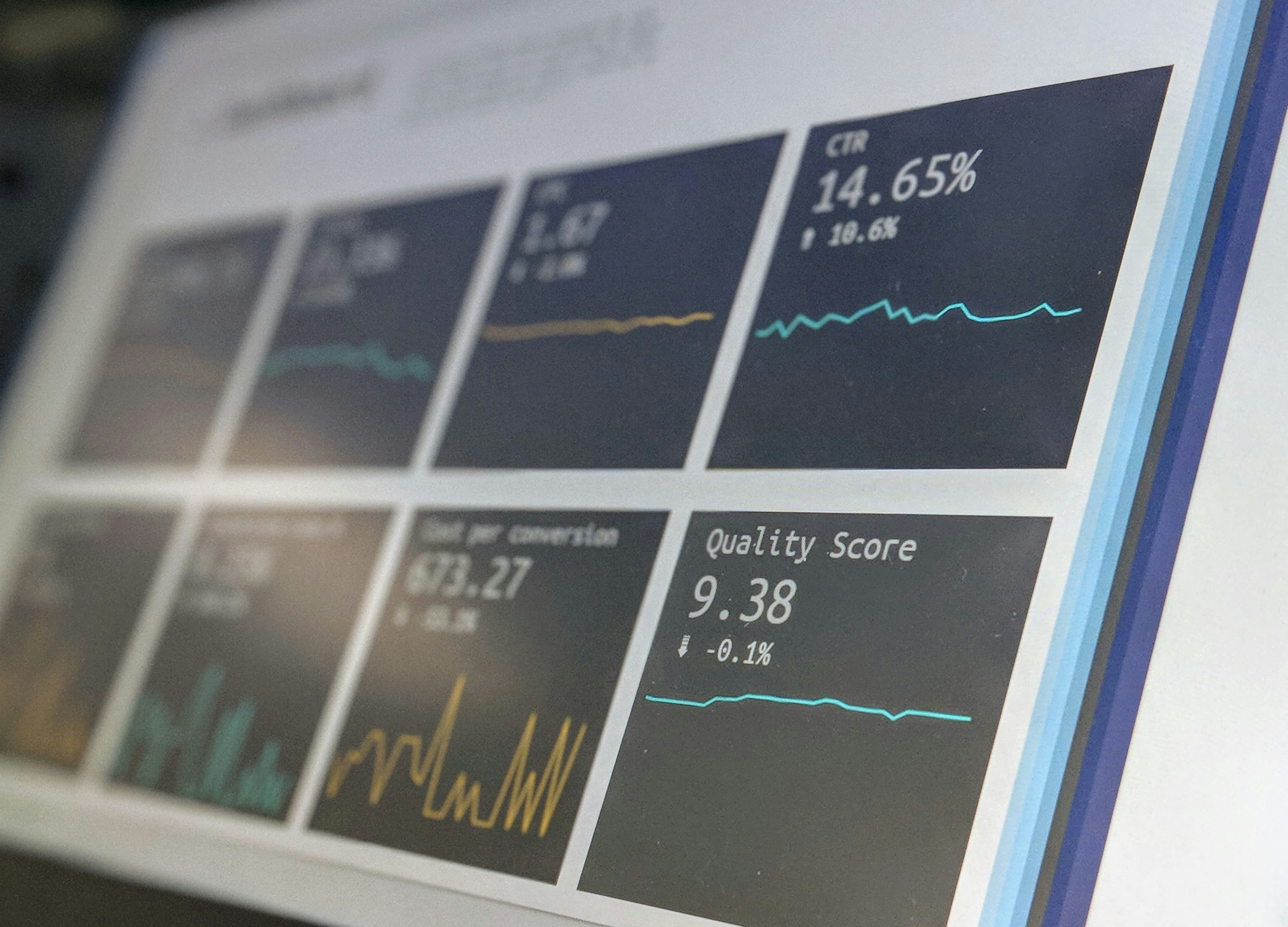
Customer journey analytics and customer journey mapping are often confused with each other. Although they’re complementary, customer journey mapping visually presents customer journey stages from start to finish, while customer journey analytics offers data about a customers’ interactions in each stage.
Customer journey maps often include the following:
1. The buying process
By pulling data from places like CMS and prospecting tools, you will be able to figure out what goes into a customer’s purchasing process.
2. User actions
This part of the customer journey map details the actions the customer takes throughout their journey.
3. Emotions
Emotions help color your understanding of how your customer is feeling and reacting as they go through their journey with your business.
4. Pain points
Adding pain points to your customer journey map gives you a comprehensive picture of the challenges your customer may experience.
5. Solutions
Figuring out solutions can help your customers experience fewer pain points. The data and insights you’ve gathered can help inform your solutions.
Customer journey analytics delves deeper
The customer journey map is the “what” and customer journey analytics is the “why” because it organizes customer or prospect data around each stage.
Customer Journey Map vs. Analytics Example
Let��’s say your business offers CMS tools and your ideal customer, a graphic design firm, finds you through a targeted Instagram ad.
Exploring Pain Points in the Customer Journey
In the customer journey map you’ve built, your target customer considers using your CMS tools to build a new website that showcases their strengths. They schedule a demo before trying the free version and are initially excited, but become frustrated with the limited design elements offered by the free version. Their biggest pain point quickly becomes lack of versatility. They then look into purchasing the paid version or go to a cheaper competitor.
Harnessing Real-Time Data for Enhanced Customer Insights
With customer journey analytics, you’ll apply real-time data to that map: From journey mapping, you’ve identified the steps your customer often takes and their common pain points. A strong customer journey analytics tool can then collect, aggregate, synthesize, and visualize data to help you make sense of your customer’s actions and see if your mapping and journey-based strategies work.
For example, data might show how your customer is interacting with your product.
A good Customer Journey Analytics platform combines data like user data, survey results, and website analytics, you can gain a comprehensive view of why your customer is experiencing those pain points and consequently address their concerns.
Create Personalized Experiences That Drive Loyalty and Growth with Rengage — Book A Free Demo Today
Through Rengage’s customer journey analysis platform, clients can unlock revenue from their existing users by gaining insights into their segments, executing campaigns using an intuitive journey manager, and measuring the impact of those journeys on user conversion.
With features like Journey Moments and Journey Builder, clients can delve into micro-segments, harness intuitive multi-channel marketing automation, and gain insights for predicting and attributing conversions. Users can book a free demo with Rengage to experience how personalized experiences can transform customer interactions, fostering loyalty and driving growth.
Related Reading
- Customer Lifecycle Management Software
- Customer Journey Mapping Tools
- Customer Journey Management
- Braze Alternative
- Fullstory Alternatives
- Adobe Analytics Alternatives
- Customer Journey Analytics Tools
- Iterable Competitors
- Marketo Alternatives
- Onesignal Alternatives
- Clevertap Alternatives
- Bloomreach Alternatives
- Customer.io Alternatives


